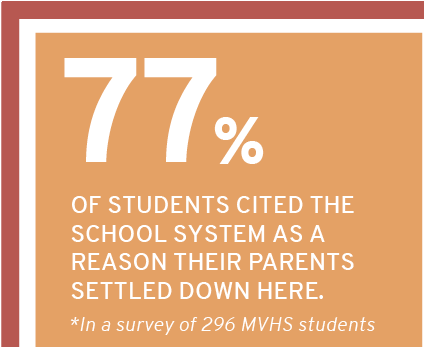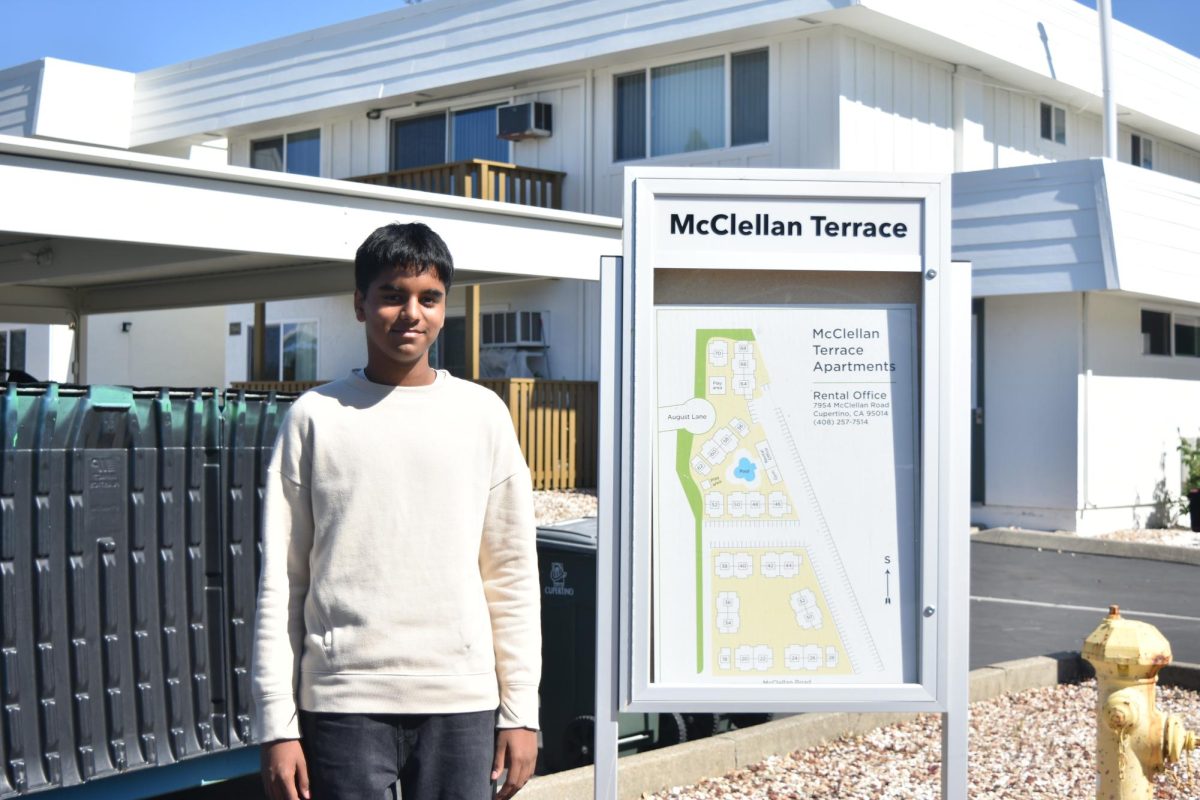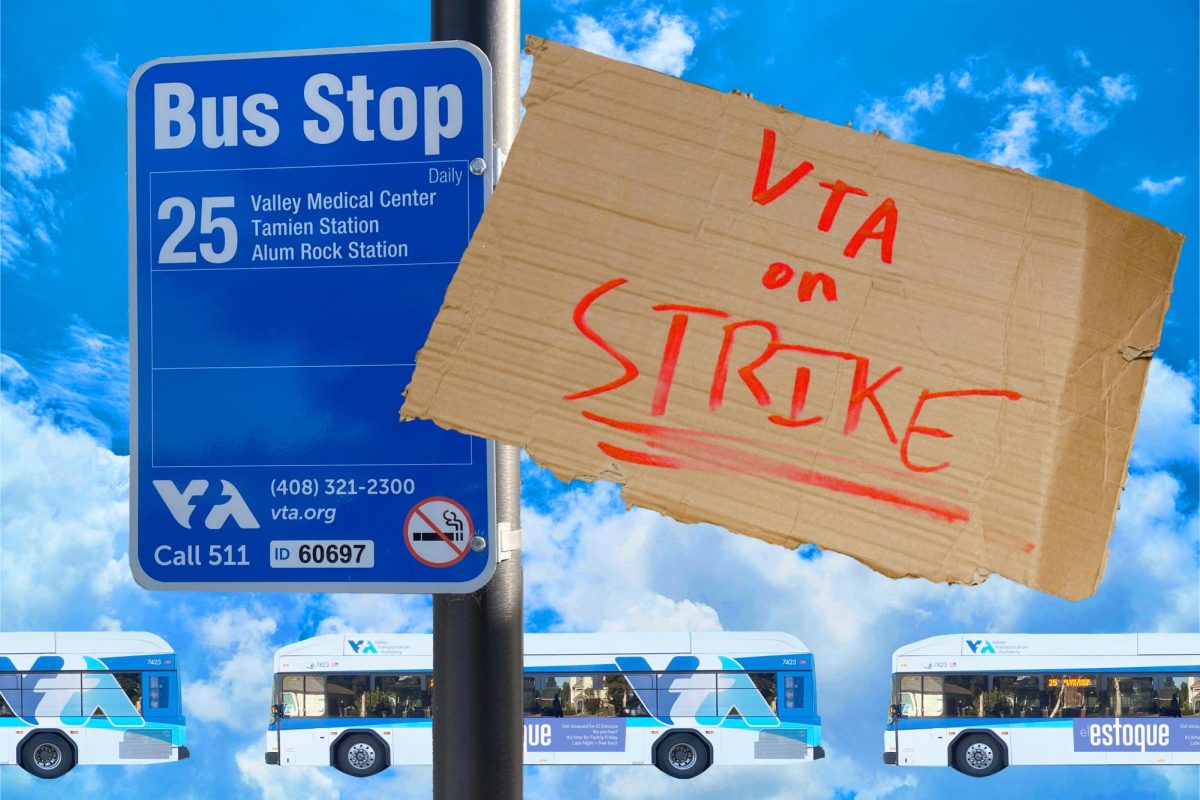Story by Alina Abidi and Fatima Ali
View more info at https://www.elestoque.org/housing/
he decision wasn’t sudden. In fact, it had been years in the making: an abstract thought that became concrete last Spring. English teacher Matt Brashears and his wife knew that at some point, they wanted to own a home. And they knew that this wouldn’t happen in Cupertino.
So when he was offered a job in Bonney Lake, Washington at the end of his seventh year of teaching at MVHS, he took it. And next year, four more long term teachers will have left the Bay Area to teach in more affordable areas. But for more and more teachers, settling here is impossible. 
According to the real estate tracking website Zillow, Silicon Valley homes currently average over $1 million. Meanwhile, public records state that FUHSD salaries stand around $100,000 for teachers that have been working for around a decade. Although this may sound like a sufficient salary, certain Bay Area residents, like Brashears, don’t feel that it’s enough. Teachers starting families often want to build roots in their community, and for some, roots mean owning a home — maybe even one with a backyard.
Despite the lack of affordable housing in and around Cupertino, the teacher retention rate is high at around 95 percent, according to Associate Superintendent Tom Avvakumovits. But though the overall numbers are impressive, the loss of each individual teacher is deeply felt in schools.
According to Avvakumovits, the bulk of recently hired teachers are straight out of graduate school. FUHSD maintains relations with partner universities, like Stanford, Santa Clara University, San Jose State and University of California, Santa Cruz. This makes it easier to recruit s teachers, but affordability is still an issue after these new teachers are hired.
“It doesn’t solve the long-term problem; ‘Oh great, we have this great teacher that might be able to share a bedroom at their starting salary [near] $56,000.“ Avvakumovits said. “But then they get married and have kids and a family…” “Or they might marry an Apple executive,” Bove said, laughing.
Avvakumovits also believes constant cycles of new teachers wouldn’t be sufficient. “Now is the time to think of our craziest ideas because our human capital is our most valuable resource. I’m not sure the Peace Corps model — where you go in for two years and do great work and then move on to something else — is what we want public education to become,” Avvakumovits said. “Sustainable long-term educational progress can’t be on the backs of a constantly changing teaching force.”
The district is eager to try new options to keep these veteran teachers. The obvious answer is an increase in salary, but resources are limited. Another option could be helping teachers with down payments on homes, but that veers into “gift of public funds” territory. Superintendent Polly Bove even suggested buying mobile homes for teachers to rent, or following the New York model and further dividing already cramped housing arrangements.
On May 7, Assemblymember Rich Gordon hosted an event at the FUHSD office for the Bay Area to focus on teacher retention and recruitment — a group brainstorm regarding affordable housing and more funding. There are no clear solutions yet, but not for lack of trying. 
Some Below Market Rate options are set aside for teachers and other public servants, but they’re based on a lottery system and only last for about five years. FUHSD Coordinator of Curriculum and Assessment, Marianne Hew, one of the first occupants of the Santa Clara Unified Districtís program, felt lucky to be picked early in the lottery in her first year of teaching. Though she explored other, less convenient options and would have taught in Santa Clara regardless, the few years she spent in the program
Some, like housing advocate Sue Saroni, believe the answer lies in building more affordable housing. Saroni, who was present at Assemblyman Gordon’s Education Update event, explained that salary raises large enough to solve the problem are unlikely, and thus, more housing should be created.
But according to Avvakumovits and Gordon, more housing is not always met by public support.
“Right now in this region we’re seeing a lot of folks saying, ‘We don’t want more housing, we’ve got enough people, we’ve got enough traffic,’” Gordon said. “But we’ll need to build more housing if we’re going to have adequate housing for the people we want to work here.”
But BMR housing, or renting a condo or living with your parents, are only temporary options.
“For a single, unmarried teacher, it can feel easier to want to commit to this area if you’re just going to rent a place or rent a room,” English teacher Scott Catrette said. “But your priorities change when you’re married and you have a family.”
Catrette is moving to Texas this year, and though the area will be new and different, it will be significantly cheaper, and he has family in the area. But not all teachers leave the West Coast in search of more affordable housing. Brashears, along with married English teacher Michelle Balmeo and social studies teacher Andrew Sturgill, decided to head to the Pacific Northwest, where purchasing a home with a yard is more feasible. The salaries are lower as well, but compared to the price of a house, much more in line. According to the Oregon Education Association, the average teacher salary from 2013-2014 in Oregon is $57,321, but Zillow states that the average cost of a home is only $271,500.
FUHSD district office employees Lena and Matt Bryant managed to keep their current jobs while purchasing a home in a more affordable area. But they had to make a different sacrifice, this one in the form of 90-minute-long commute each way.
Though the journey is long, the prices of renting a house, much less purchasing one, were impossible in the Bay Area, without including electricity, cable and car payments.
Lena feels that the pay and benefits they receive from FUHSD are great, and that they’re looking to be long term employees of an organization and eventually retire from it. The two have found jobs they love, but are not willing to give up the financial security they earn from purchasing a house in a cheaper area.
“Hollister doesn’t offer anything except a better price,” Lena said. “That’s the only reason we moved.”
Each teacher and employee finds a different way to navigate the housing crisis, but there are always sacrifices: saying goodbye to an 11 year job with your first employer, sitting in traffic for a few extra hours each day, not being able to purchase a home for your family. There’s no one clear answer, and there might never be. Catrette, who’s moving to a school district with more affordable houses, doesn’t feel like a weight is off his back.
“Life has a way of making other problems arrive,” he said. “You put out one fire and another one starts.”














